When it comes to adding super nutritious fruit to your landscape, it’s hard to beat the benefits of growing a few elderberry bushes.
For many years, elderberries were more considered more “wild” than domesticated. They were most often found growing along ditches and fence rows. And for those that loved them, it was an annual ritual to search and harvest.
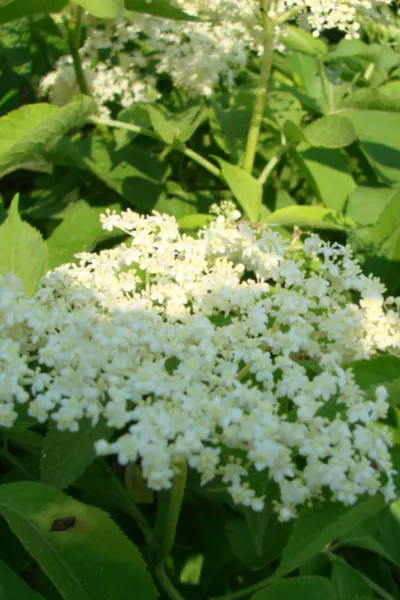
But this sensational bush-style perennial is now finding its way into many backyard landscapes.
Not only are elderberries full of nutrients, their foliage and showy blooms can add big interest to a landscape. And perhaps best of all, they are quite easy to plant and maintain!
The Benefits of Growing Elderberry Bushes
Elderberries have a long history when it comes to their reputation as a powerful “super” fruit. Ancient Egyptians used them to help combat all types of ailments, as did Native Americans and many other cultures.
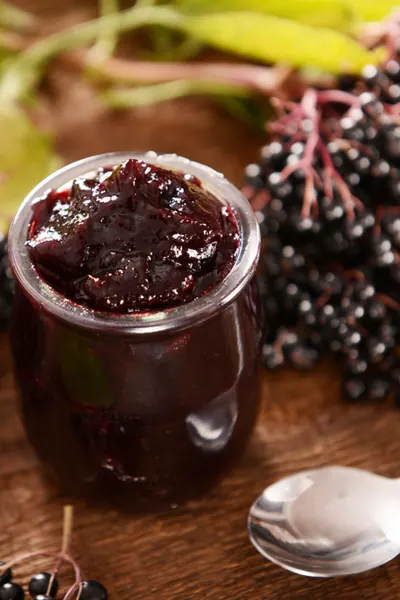
In fact, in many communities, elderberries were thought to help combat everything from cold and flu symptoms, to helping soothe stomach issues and even inflammation. And, there are still many who believe just as strongly in their healing and medicinal powers as well.
One thing is for sure, elderberries come power-packed with nutrients! They are low in calories and loaded with antioxidants. In addition, they contain large amounts of Vitamin C & A, and are a rich source of fiber too.
And for all of these reasons and more, they are a great addition to any yard or landscape!
Growing Elderberries – How To Plant
When planting and growing elderberry bushes, success starts with selecting the proper location.
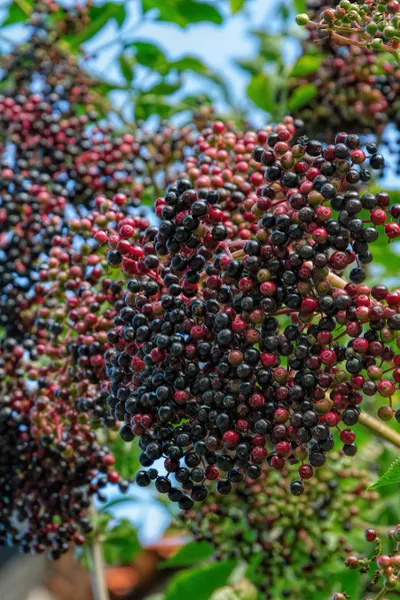
Bushes should be located in a mostly sunny location with at least 8 hours of sunlight. They can handle partial shade, but elderberries need a fair amount of sunlight to ripen berries.
Elderberries also need moisture to produce a heavy fruit load. Because of this, elderberry bushes are perfect for growing in low-lying, moist areas of the landscape.
They can handle locations that are extremely wet well as long as standing water is not present for long periods of time. It is one of the reasons elderberries grow well in ditches in the wild. The frequent supply of moisture streaming into the ditch makes for a healthy plant.
Planting & Growing Elderberry Bushes
Begin by choosing varieties well suited to your growing zone. Although a single plant will provide fruit, planting at least two bushes of separate varieties will increase the production levels of both plants.

Bushes need fertile soil to thrive. Amend the soil when planting with a heavy dose of compost.
Dig planting holes twice the diameter of the transplant and a few inches deeper. Back fill planting holes with an equal mix of compost and soil, keep the crown of the plant level with the surrounding soil. Finish by applying a few inches of mulch on top. This helps to conserve moisture for the elderberry bushes as they grow.
Harvesting
Elderberries are ready to harvest when their fruit turns from light green and red to a deep purple. Plants will flower in late spring / early summer, with the berries usually ripening in mid August. The flowers are actually edible, and many swear by their medicinal and nutritional values as well.
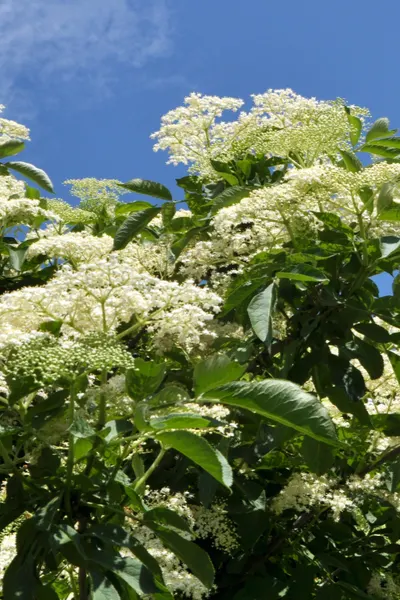
Cooking elderberries before consumption is a must. Not only does it improve their flavor, but raw berries can cause stomach issues. They make delicious jam, jellies and syrup as well as pastries and pies. See: Elderberry Recipes
Long Term Care
Elderberry bushes are truly a low-maintenance bush in the landscape. As elderberry bushes grow, they do so slowly via rhizomes underground. The spread and growth comes up from underneath the soil in U-shaped canes.
Most elderberry bushes grow to 6′ to 12′ in size. After a few years, prune older “Canes” back to allow for the growth of newer, more vigorous canes.
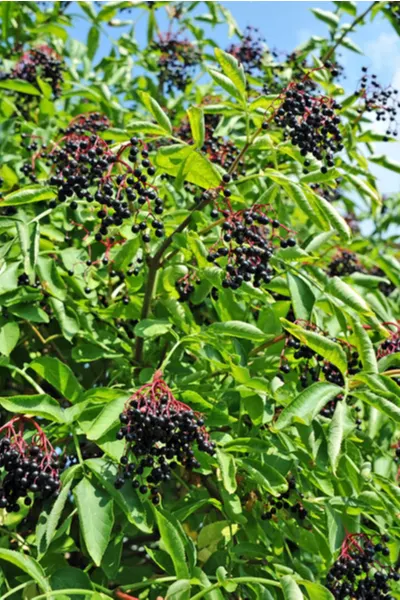
Here is to planting and growing a few elderberry bushes and enjoying a bit of super fruit for years to come!
For more on growing more perennial fruit in the landscape, check out our whole section dedicated to the subject : Growing Perennial Fruit

This Is My Garden is a website dedicated to spreading the love and knowledge of gardening around the world. We publish two new garden articles each week. This article may contain affiliate links.
